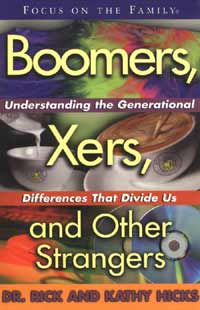The Generations in Conversation course recently looked at the formation of values, with the role of parenting, family styles and environment on those values. Our concern was that much of what we read about generational formation glosses over the distinctive values developed in different settings. A clear example for the course members was the difference between those growing up on the coast of Australia (East for us in Queensland) and those growing up in the country (West).

We took a look at the work of Rick and Kathy Hicks in their 1999 book, Boomers, Xers and Other Strangers. Hicks outline eight factors in the development of values: family, formal education, other formal & informal teachers, religion, media, friends, income and geographic location. Rick and Kathy draw on Morris Massey’s book, “The People Puzzle” to outline the chronological development of values. In the first seven years children are likely to be imprinting by observation or patterning. From eight to thirteen years of age children are likely to be modelling through heroes or identification. In the teen years socialisation by peers or significant others. From the age of 21 and on early adults are likely to be influenced by significant emotional events in the changing or replacement of values.
Sexual Attitudes and New Generations
We asked why we were seeing changing attitudes to sexuality. Education and the media certainly played a significant role. But even more so parents played a significant role in the development of values in emerging generations.
We considered the impact of sexual abuse on under sevens. Recent studies had shown that even though schools had developed vocabulary and training for children at a young age, even pre-school, it was the parents who needed to be developing an environment in which children could safely talk about what was happening for them. We heard about Australian and NZ research on
sexuality training for mums in preschools in the 1980s and 1990s. The development of the Life Education van on campus took sexuality education out of the hands of parents.
We talked about the impact of school environments on children. A text for the conversation was a recent awards night at an independent school. Awards were given to a select few from each level for achievement in academic work, sports and community service. We reflected on the values espoused by the school, with particular reference to a culture of conformity. What would happen if a school promoted values of social justice as much as academic excellence?
The reality for most young adults was that as they left school they realised that the values of high school education were not all they were ‘cracked up to be’. The high pressure to perform for Year 12 was rejected by many who chose different priorities. However there were those who carried the high-achievement culture through into a life time of workaholism and materialism.
Gen X and Y
We looked at some of the emerging faith-related values being developed by churches focused on Generation X and Y. We were seeing more alternative faith communities that did not buy into the cult of largeness. Spirituality was being emphasized rather than conformity to orthodox beliefs. We noticed that Gen X expressions of church in the Uniting Church were more likely to focus on participation rather than spectacle. Communication was more likely to be through interactive dialogue rather than monologue. We noticed the development of a smorgasbord spirituality in which people could pick and choose the elements of their own version of faith.
Creation of culture
I told the story of the funeral of my daughter. As a family we had experienced a wide variety of Polynesian grieving processes and put together our own version of a tangi (New Zealand Maori). Rather than meeting at home or the ‘marae’ we held a three day extended funeral at the church in which young people and family lived, ate and slept in community. Kristen’s body was able to be seen and touched during the day. People could come and go. The Samoan, Cook Island, Maori and Irish communities knew what this was all about. However there were those who were puzzled that this model did not fit with the orthopraxy of any one culture. We were creating culture.
We explored the concept of orthodoxy – a concept that is usually linked with the survival of the institution. One generation’s view of orthodoxy could be threatened by the cultural creativity of emerging generations. What was needed was a sense of self awareness for members of each generation – a sense of history, personal story and ongoing value development.
